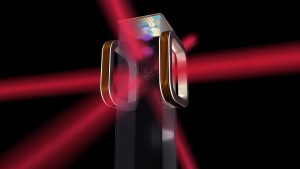
Public domain (https://www.jpl.nasa.gov/news/cold-atom-laboratory-chills-atoms-to-new-lows)
Much of science is coming up with theories and then setting out to prove them. Sometimes, the proof takes a while to collect, like in the case of Walter Henneberger. In 1968, he theorized that “an electron could be freed from an atom and bound to it at the same time, with the help of super-intense lasers.” However, lasers at that time were not strong enough to test his theory, so it took 50 years before it could actually be proven.
Now, German and Swiss scientists have used a laser “trillions of times more intense than sunlight to separate an electron from the nucleus of an atom, while keeping it close enough that it still felt the nucleus’s pull.” By doing so, these scientists have also discovered other things about what atoms and lasers can do when the later is applied to the former.
Because of this finding, experimental physicists like Dipanjan Mazumdar, who currently teaches at Southern Illinois University Carbondale, from which Henneberger retired, are interested in seeing if Henneberger has any other theories that were not testable in his heyday, but might also be testable with today’s technology.
You can read more about these physicists and what they’re doing here!
Follow us online:
